RF Design and Measurements of a C-Band Prototype Structure for an Ultra-High Dose-Rate Medical Linac
Abstract
1. Introduction
2. Materials and Methods
2.1. Prototype Electromagnetic Design
2.2. Measurements Setup
3. Prototype RF Characterization and Results
3.1. Tuning Procedure
3.2. Resonant Frequency and Quality Factors Measurements Results
3.3. Bead-Pull Measurments Setup
3.4. Electric Field Measurements Results
4. Conclusions
Author Contributions
Funding
Institutional Review Board Statement
Informed Consent Statement
Data Availability Statement
Conflicts of Interest
References
- Lievens, Y.; Borras, J.; Grau, C. Provision and use of radiotherapy in Europe. Mol. Oncol. 2020, 14, 1461–1469. [Google Scholar] [CrossRef]
- Borras, J.; Lievens, Y.; Barton, M.; Corral, J.; Ferlay, J.; Bray, F.; Grau, C. How many new cancer patients in Europe will require radiotherapy by 2025? An ESTRO-HERO analysis. Radiother. Oncol. 2016, 119, 5–11. [Google Scholar] [CrossRef] [PubMed]
- Favaudon, V.; Caplier, L.; Monceau, V.; Pouzoulet, F.; Sayarath, M.; Fouillade, C.; Poupon, M.F.; Brito, I.; Hupé, P.; Bourhis, J.; et al. Ultrahigh dose-rate FLASH irradiation increases the differential response between normal and tumor tissue in mice. Sci. Transl. Med. 2014, 6, 245ra93. [Google Scholar] [CrossRef] [PubMed]
- Di Martino, F.; Del Sarto, D.; Bisogni, M.G.; Capaccioli, S.; Galante, F.; Gasperini, A.; Linsalata, S.; Mariani, G.; Pacitti, M.; Paiar, F.; et al. A new solution for UHDP and UHDR (Flash) measurements:Theory and conceptual design of ALLS chamber. Phys. Med. 2022, 102, 9–18. [Google Scholar] [CrossRef]
- Schuler, A.; Heinrich, S.; Fouillade, C.; Subiel, A.; De Marzi, L.; Romano, F.; Peier, P.; Trachsel, M.; Fleta, C.; Kranzer, R.; et al. The European Joint Research Project UHDpulse–Metrology for advanced radiotherapy using particle beams with ultra-high pulse dose rates. Phys. Med. 2020, 80, 134–150. [Google Scholar] [CrossRef] [PubMed]
- Jolly, S.; Owen, H.; Schippers, M.; Welsch, C. Technical challenges for FLASH proton therapy. Phys. Med. 2020, 78, 71–82. [Google Scholar] [CrossRef] [PubMed]
- Bourhis, J.; Sozzi, W.J.; Jorge, P.G.; Gaide, O.; Bailat, C.; Duclos, F.; Patin, D.; Ozsahin, M.; Bochud, F.; Germond, J.; et al. Treatment of a first patient with FLASH-radiotherapy. Radiother. Oncol. 2019, 139, 18–22. [Google Scholar] [CrossRef] [PubMed]
- Di Martino, F.; Barca, P.; Barone, S.; Bortoli, E.; Borgheresi, R.; Stefano, S.D.; Francesco, M.D.; Faillace, L.; Giuliano, L.; Grasso, L.; et al. FLASH radiotherapy with electrons: Issues related to the production, monitoring, and dosimetric characterization of the beam. Front. Phys. 2020, 8, 481, Erratum in Front. Phys. 2021, 8, 648. [Google Scholar] [CrossRef]
- Jaccard, M.; Durán, M.; Petersson, K.; Germond, J.-F.; Liger, P.; Vozenin, M.-C.; Bourhis, J.; Bochud, F.; Bailat, C. High dose-per-pulse electron beam dosimetry: Commissioning of the Oriatron eRT6 prototype linear accelerator for preclinical use. Med. Phys. 2018, 45, 863–874. [Google Scholar] [CrossRef] [PubMed]
- Moeckli, R.; Gonçalves, J.P.; Grilj, V.; Oesterle, R.; Cherbuin, N.; Bourhis, J.; Vozenin, M.-C.; Germond, J.-F.; Bochud, F.; Bailat, C.; et al. Commissioning of an ultra-high dose rate pulsed electron beam medical LINAC for FLASH RT preclinical animal experiments and future clinical human protocols. Med. Phys. 2021, 48, 3134–3139. [Google Scholar] [CrossRef] [PubMed]
- Schüler, E.; Trovati, S.; King, G.; Lartey, F.; Rafat, M.; Villegas, M.; Praxel, A.J.; Loo, B.W., Jr.; Peter, G. Maxim Experimental platform for ultra-high dose rate FLASH irradiation of small animals using a clinical linear accelerator. Int. J. Radiat. Oncol. Biol. Phys. 2017, 97, 195–203. [Google Scholar] [CrossRef] [PubMed]
- Lempart, M.; Blad, B.; Adrian, G.; Bäck, S.; Knöös, T.; Ceberg, C.; Petersson, K. Modifying a clinical linear accelerator for delivery of ultra-high dose rate irradiation. Radiother. Oncol. 2019, 139, 40–45. [Google Scholar] [CrossRef] [PubMed]
- Berne, A.; Petersson, K.; Tullis, I.; Newman, R.G.; Vojnovic, B. Monitoring electron energies during flash irradiations. Phys. Med. Biol. 2021, 4, 045015. [Google Scholar] [CrossRef] [PubMed]
- Faillace, L.; Barone, S.; Battistoni, G.; Di Francesco, M.; Felici, G.; Ficcadenti, L.; Franciosini, G.; Galante, F.; Giuliano, L.; Grasso, L.; et al. Compact S-band linear accelerator system for ultrafast, ultrahigh dose-rate radiotherapy. Phys. Rev. Accel. Beams 2021, 24, 050102. [Google Scholar] [CrossRef]
- Giuliano, L.; Franciosini, G.; Palumbo, L.; Aggar, L.; Dutreix, M.; Faillace, L.; Favaudon, V.; Felici, G.; Galante, F.; Mostacci, A.; et al. Characterization of Ultra-High-Dose Rate Electron Beams with ElectronFlash Linac. Appl. Sci. 2023, 13, 631. [Google Scholar] [CrossRef]
- CST Microwave Studio Suite. Available online: https://www.3ds.com/products-services/simulia/products/cst-studio-suite/ (accessed on 15 December 2022).
- Wangler, T.P. RF Linear Accelerators; John Wiley & Sons: New York, NY, USA, 2008; p. 045015. [Google Scholar]
- Ginzton, E.L. Microwave Measurements; McGraw-Hill: New York, NY, USA, 1958. [Google Scholar]
- Kalkman, C.J. LabVIEW: A software system for data acquisition, data analysis, and instrument control. J. Clin. Monit. 1995, 11, 51–58. [Google Scholar] [CrossRef] [PubMed]
- Maier, L.C., Jr.; Slater, J.C. Field strength measurements in resonant cavities. J. Appl. Phys. 1952, 23, 68–77. [Google Scholar] [CrossRef]
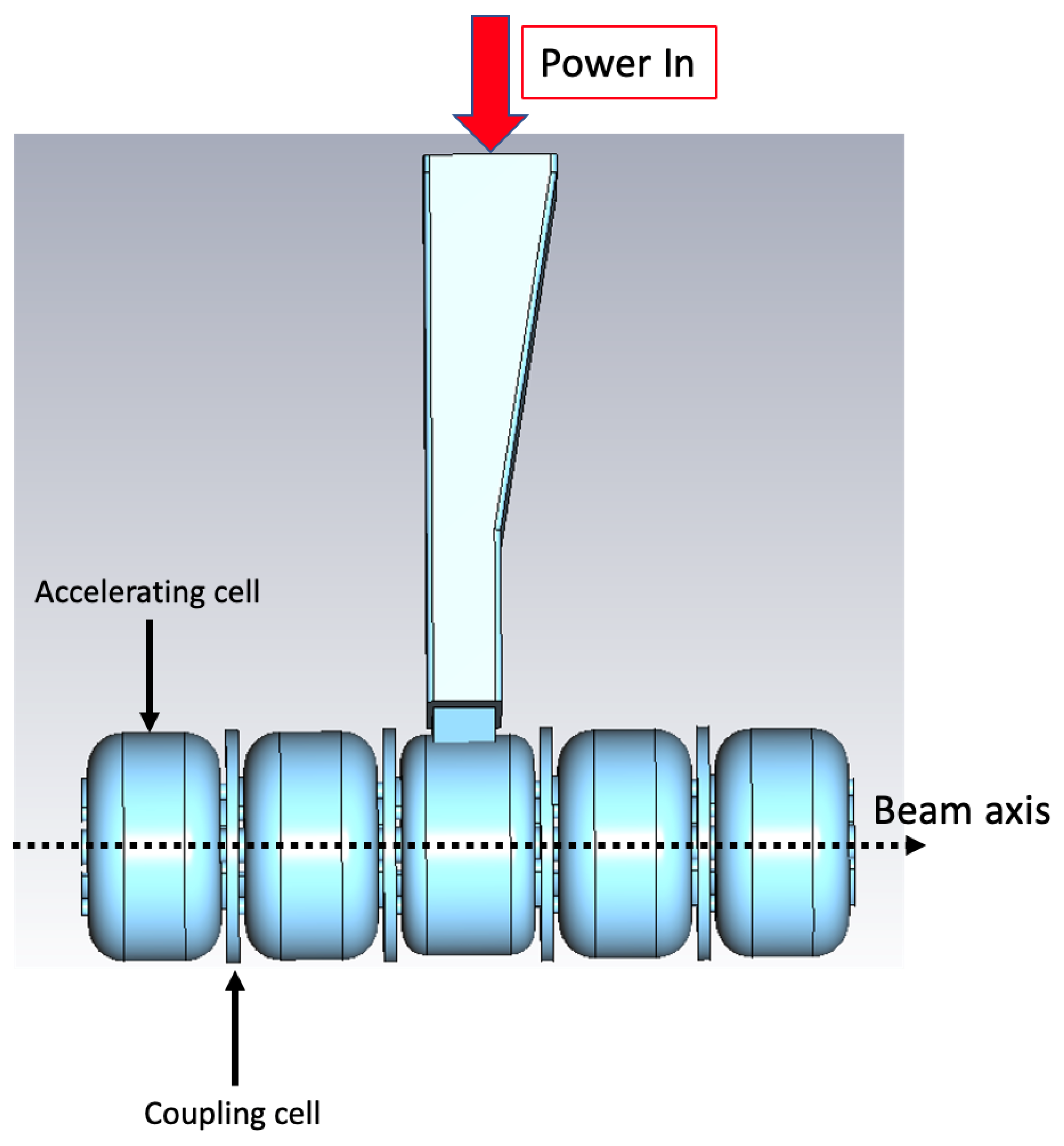
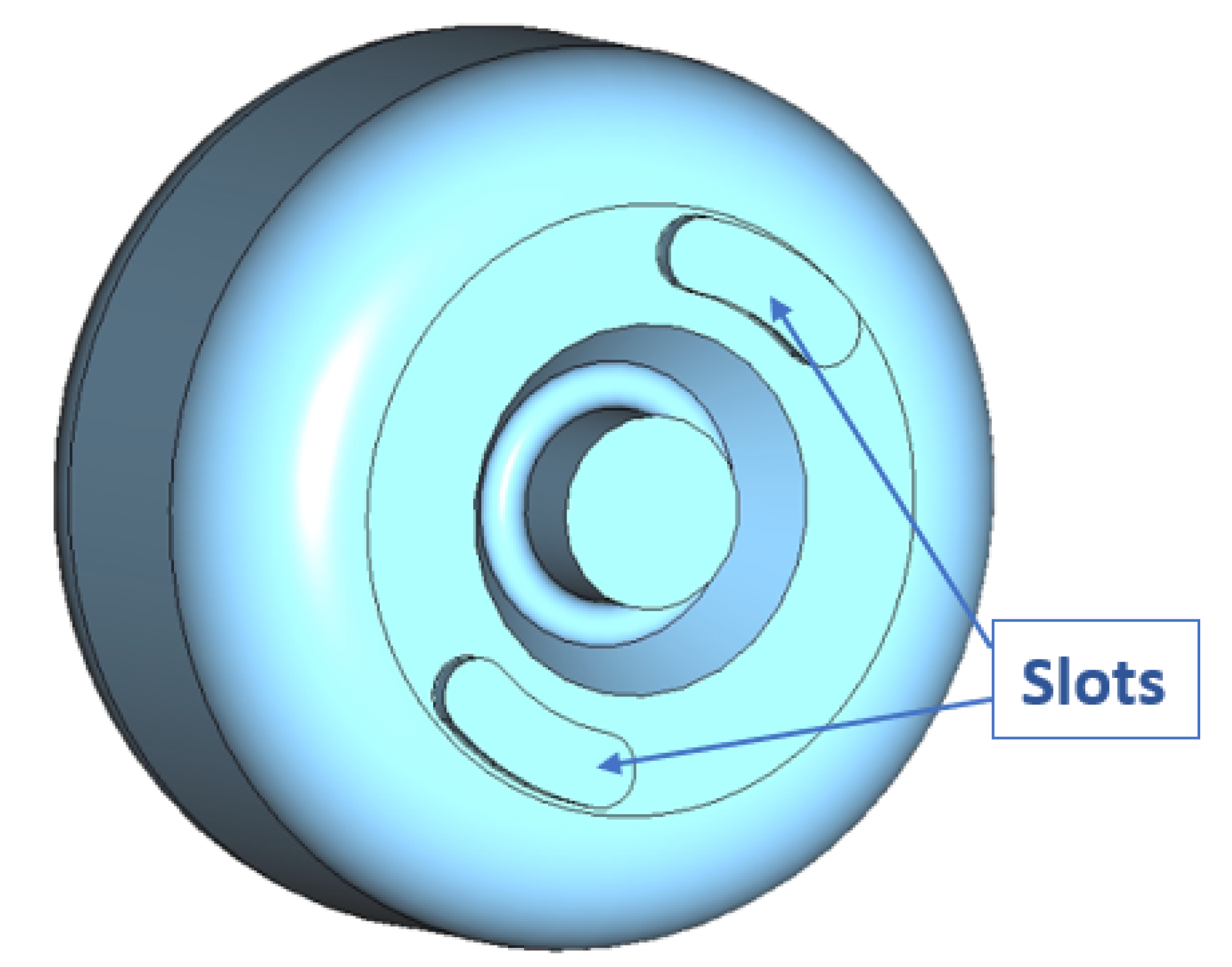
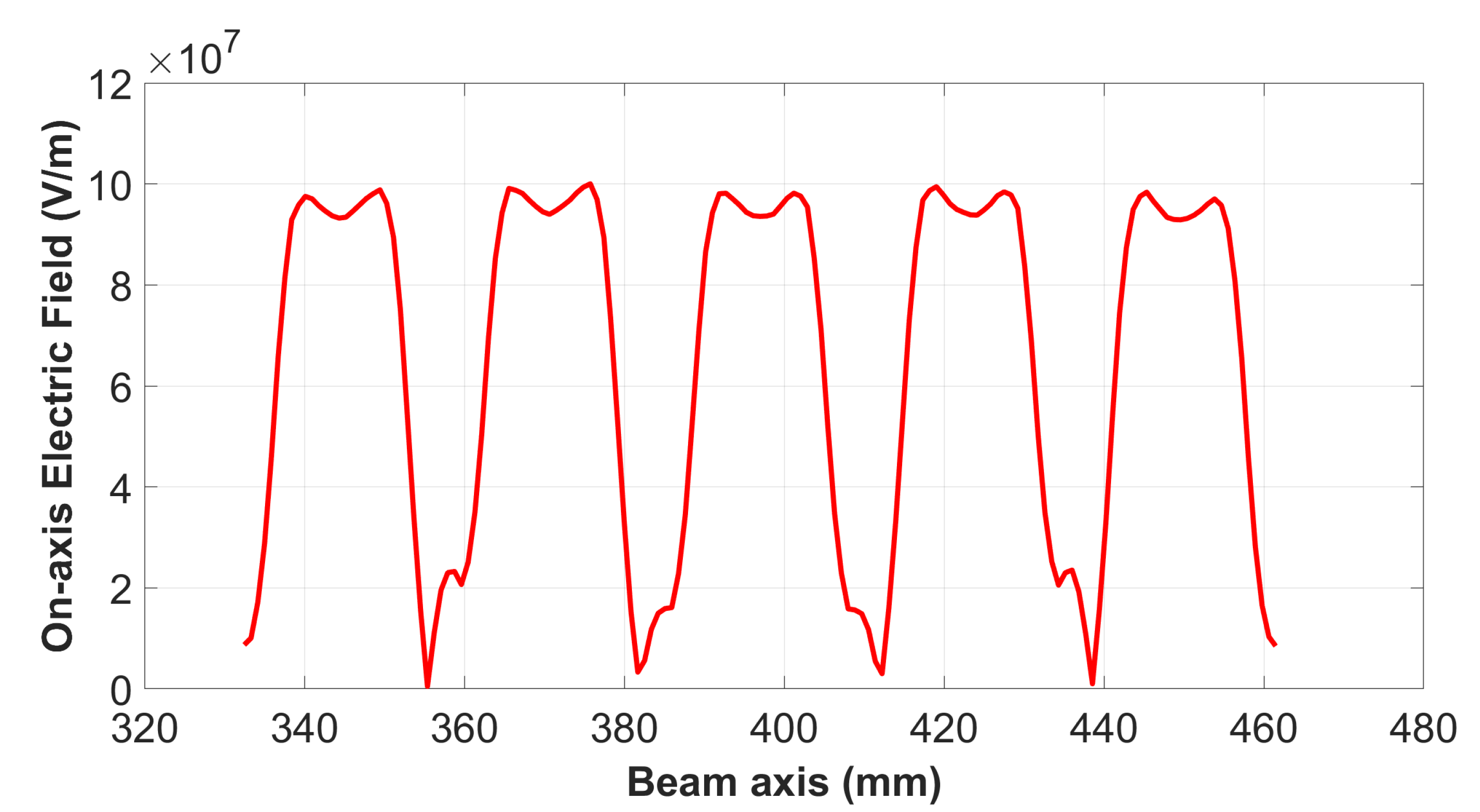

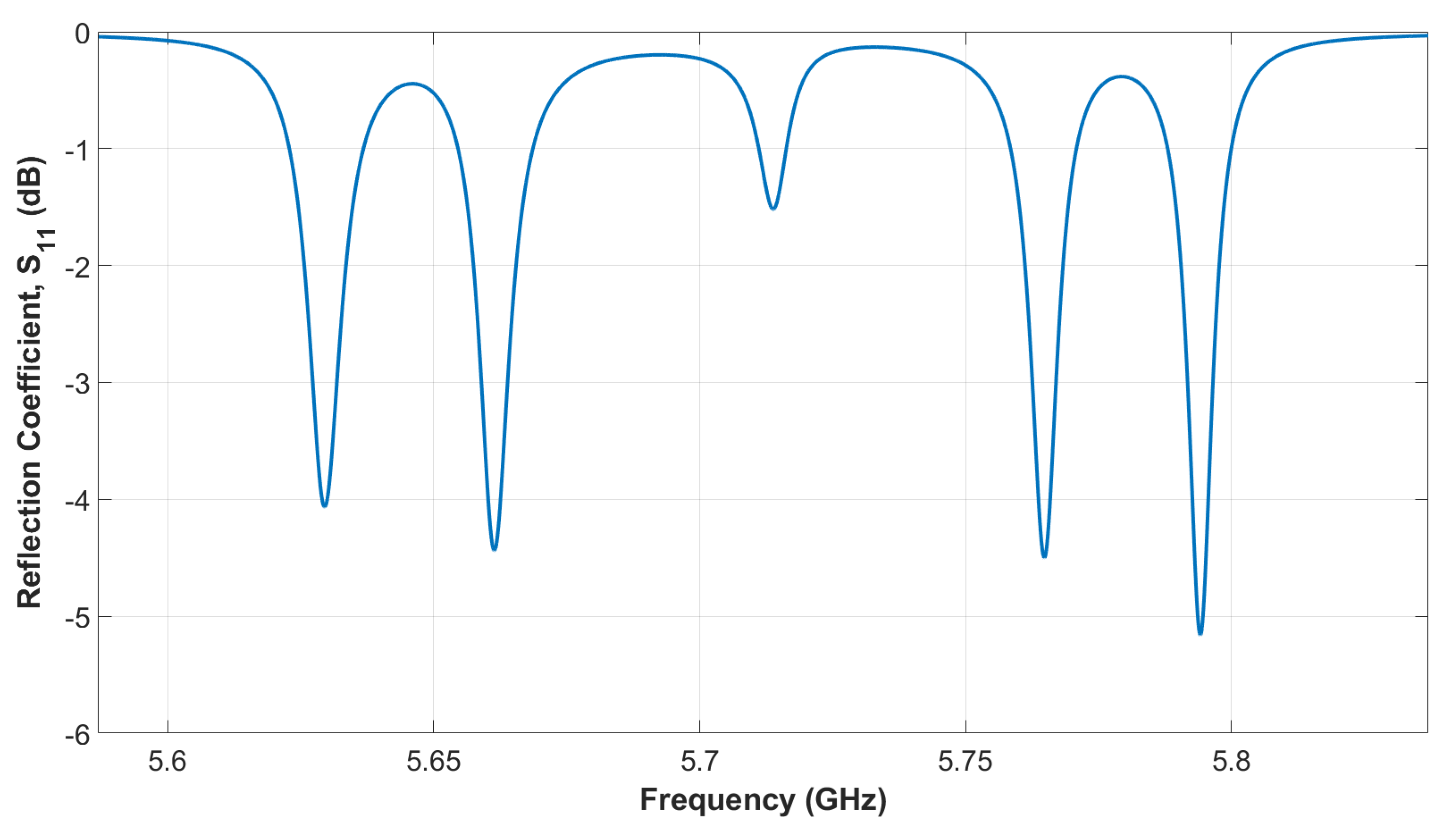
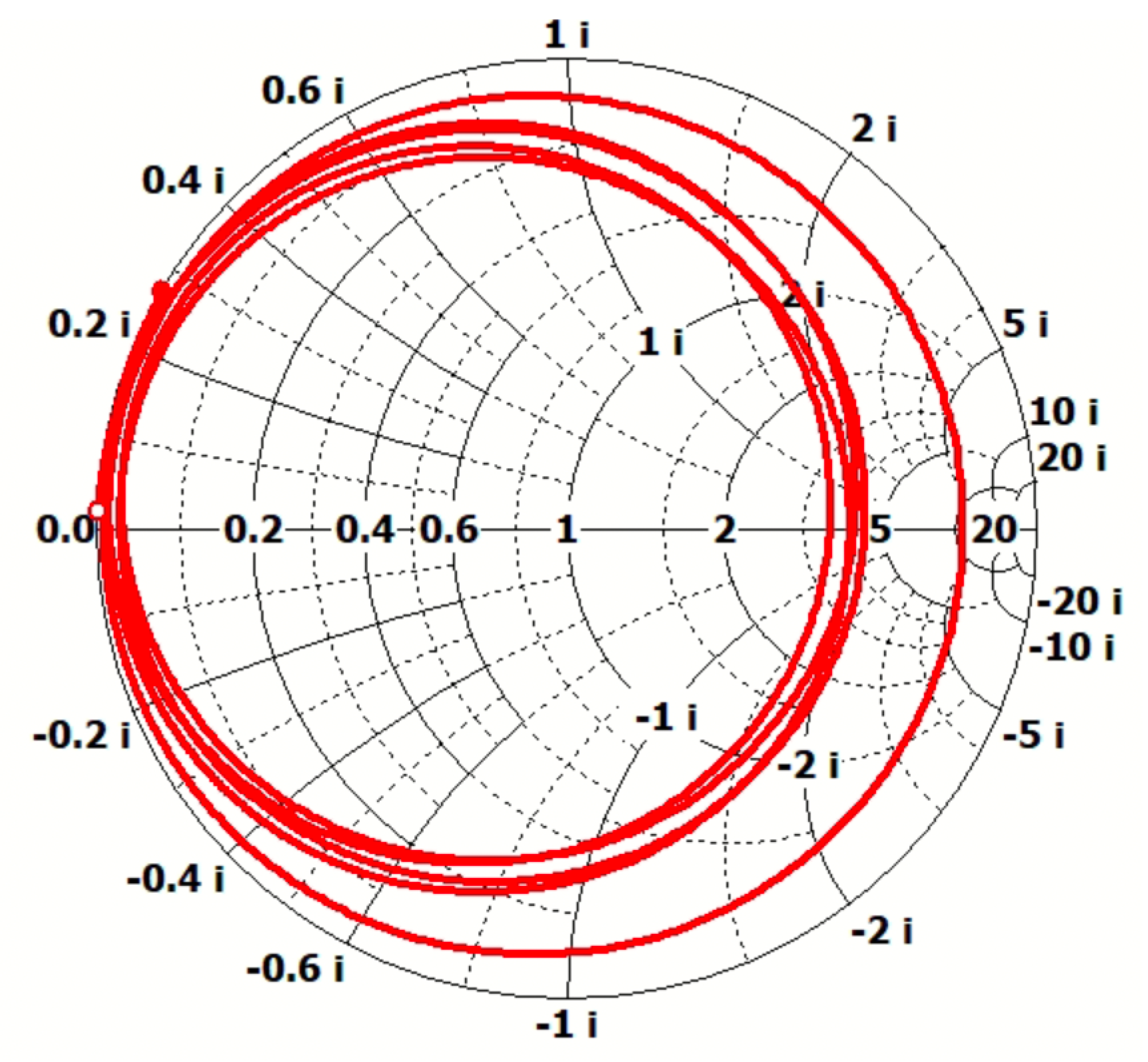



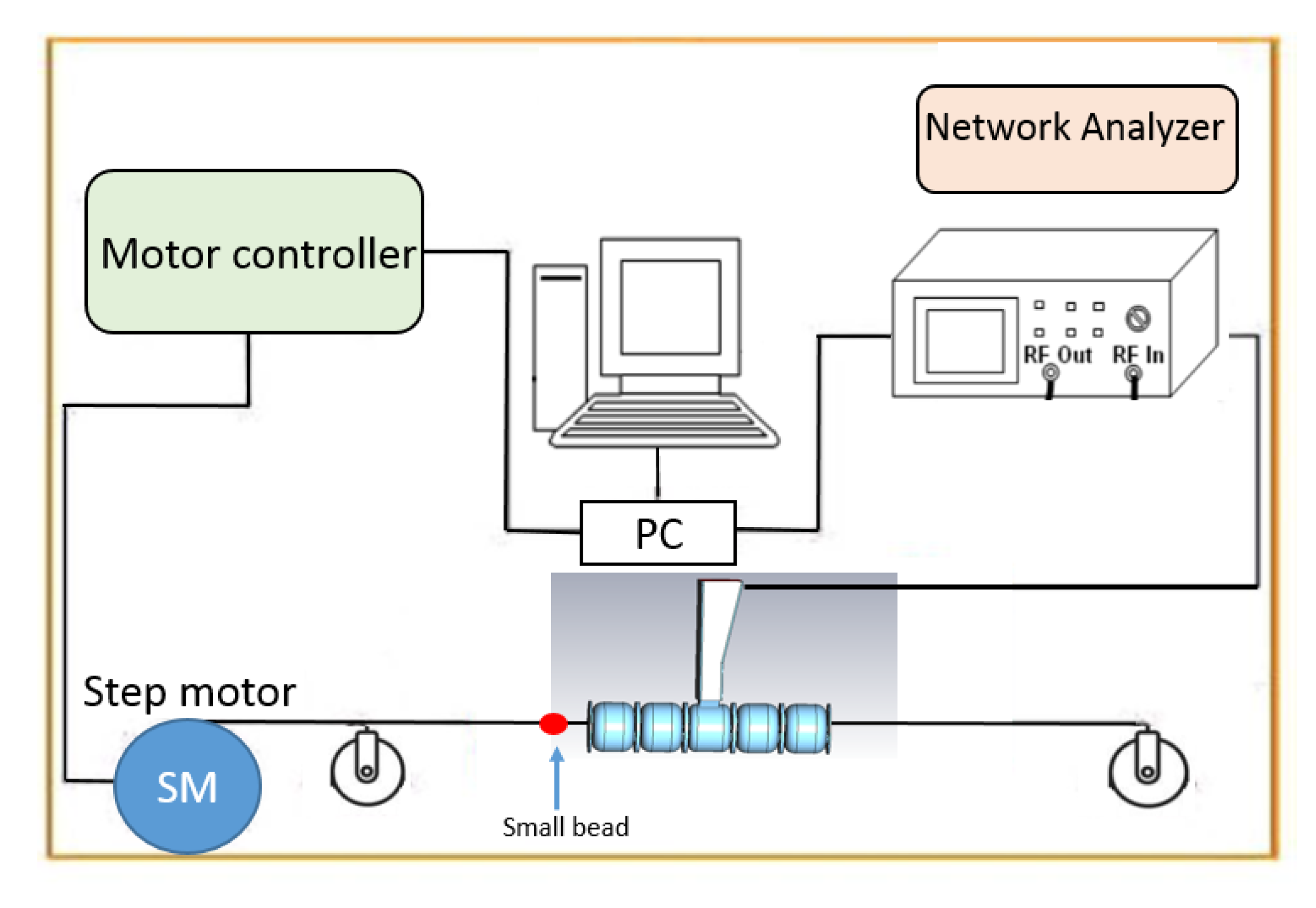
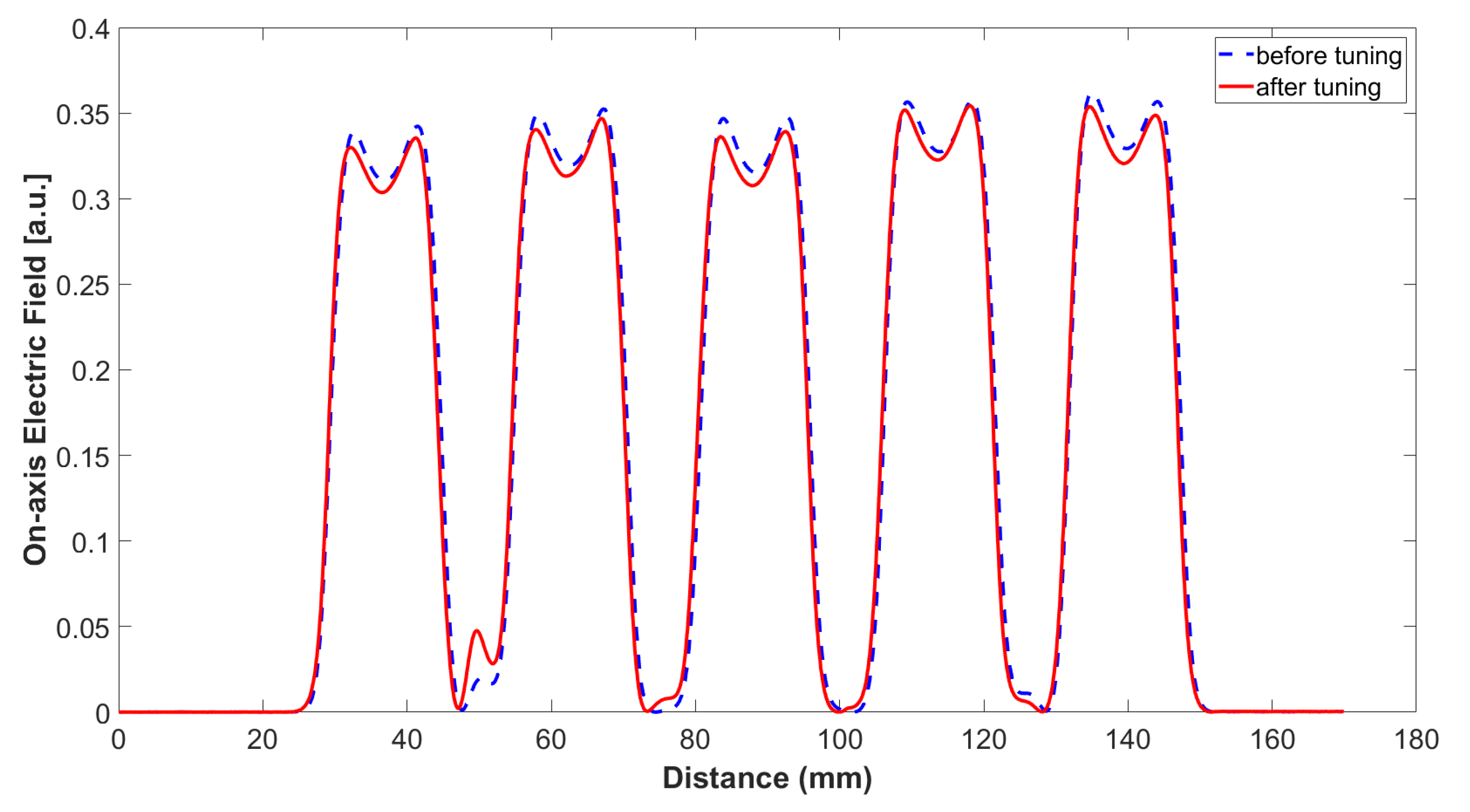
| Parameter | Value |
|---|---|
| Beam final energy | 9–12 MeV |
| Frequency | 5.712 GHz |
| Pulse width | 4 µs |
| Repetition frequency | 100 Hz |
| Peak current | 50–120 mA |
| Instantaneous dose rate | > |
| Dose per pulse | >20 Gy in ø10 cm |
| Quality factor | 11,260 |
| Eff. Shunt Impedance | 115.94 MΩ/m |
| Waveguide-to-linac coupling | 1.9 |
| Power Input | 2.5 MW |
| Parameter | Value |
|---|---|
| Frequency | 5.7123 GHz |
| Number of Accelerating Cells | 5 |
| Number of Coupling Cells | 4 |
| Prototype linac length | 12.90 cm |
| Quality factor | 11,260 |
| Shunt impedance r | 115.94 MΩ/m |
Disclaimer/Publisher’s Note: The statements, opinions and data contained in all publications are solely those of the individual author(s) and contributor(s) and not of MDPI and/or the editor(s). MDPI and/or the editor(s) disclaim responsibility for any injury to people or property resulting from any ideas, methods, instructions or products referred to in the content. |
© 2023 by the authors. Licensee MDPI, Basel, Switzerland. This article is an open access article distributed under the terms and conditions of the Creative Commons Attribution (CC BY) license (https://creativecommons.org/licenses/by/4.0/).
Share and Cite
Giuliano, L.; Bosco, F.; Carillo, M.; Felici, G.; Ficcadenti, L.; Mostacci, A.; Migliorati, M.; Palumbo, L.; Spataro, B.; Faillace, L. RF Design and Measurements of a C-Band Prototype Structure for an Ultra-High Dose-Rate Medical Linac. Instruments 2023, 7, 10. https://doi.org/10.3390/instruments7010010
Giuliano L, Bosco F, Carillo M, Felici G, Ficcadenti L, Mostacci A, Migliorati M, Palumbo L, Spataro B, Faillace L. RF Design and Measurements of a C-Band Prototype Structure for an Ultra-High Dose-Rate Medical Linac. Instruments. 2023; 7(1):10. https://doi.org/10.3390/instruments7010010
Chicago/Turabian StyleGiuliano, Lucia, Fabio Bosco, Martina Carillo, Giuseppe Felici, Luca Ficcadenti, Andrea Mostacci, Mauro Migliorati, Luigi Palumbo, Bruno Spataro, and Luigi Faillace. 2023. "RF Design and Measurements of a C-Band Prototype Structure for an Ultra-High Dose-Rate Medical Linac" Instruments 7, no. 1: 10. https://doi.org/10.3390/instruments7010010
APA StyleGiuliano, L., Bosco, F., Carillo, M., Felici, G., Ficcadenti, L., Mostacci, A., Migliorati, M., Palumbo, L., Spataro, B., & Faillace, L. (2023). RF Design and Measurements of a C-Band Prototype Structure for an Ultra-High Dose-Rate Medical Linac. Instruments, 7(1), 10. https://doi.org/10.3390/instruments7010010









